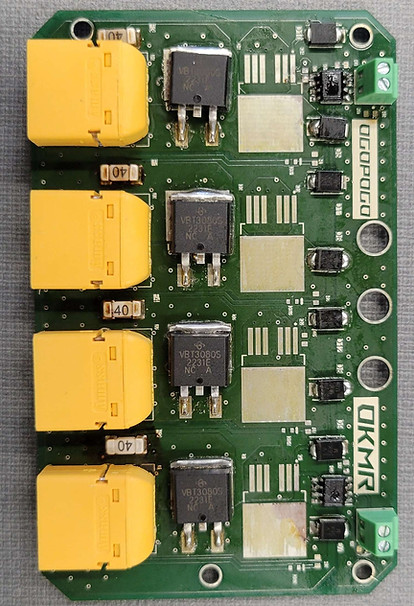
Electrical
Left to right: Gabe Piano, Seth Richard, Sachin Kumar, Maggie Wu, James Williamson, Rhea Deshpande, Yatin Gour, Aras Jahangiri, Kyle Lee, Jovan Sohi, Malachy Frey, Adam Teodosio, David Manhart, Hasan Mohammad
Not pictured: Salman Amin, Saim Hajini, Antoine Godin, Reid Pratley


Hydrophones
Our vehicle uses 4 of the aquarian S1 hydrophones which were purchased in 2025. We filter this signal through custom designed analog filter and converter boards before processing the digital signal on a Zynq 7020. The Zynq 7020 communicates with the Jetson through serial and is able to aid in navigation towards pingers
I2C Sensor Board
To unify all of our sensors and electronics across our 4 different enclosures, we designed a custom STM32 based I2C sensor board, complete with onboard sensors for enclosure based diagnostics, PWM outputs to control the gripper arm, and analog inputs. The board is connected to the I2C bus running throughout the AUV, and it also feature an I2C passthrough enabling daisy chaining of boards and allowing for devices to easily connect to the bus. The master of the bus is the ESP32


Leak Sensor
Our leak sensor is the primary interrupt on our I2C sensor bus and can be found in every enclosure. It works off a simple NPN transistor switch circuit. Once water is detected between the two probes placed on weak points in the enclosures, the base of the transistor goes from an open circuit to a short circuit, which can be read as an analog signal and sent through our I2C bus no matter where it takes place.
ESP32 Mobo
Our low level actuator and motor control is handled by an ESP32 devkit, hosted on our custom designed ESP Motherboard. The motherboard is complete with circuit protection for the ESP, sensors and debug LEDs to assist in diagnostics in the main hull and across the I2C sensor bus.


Kill Switch
Our kill switch utilizes a MOSFET in series with the motor on the low-side to remove the motors from being connected to the battery. Our design improves on last year by separating each motor into a separate channel that can be killed independently. This lowers the amount of current that the mosfets are required to handle and makes it easier to debug if any MOSFETs have fried. Our design also adds flyback diodes to safely dissipate any energy left in the motor when it is killed. Our design also added fuses to stop current from damaging anything if the ESC tries to draw more than 40A. This year MOSFET drivers were also added to protect the MCU and kill switch control circuits from being damaged by having too much current drawn by the gate of the MOSFET. This also enhanced how fast the MOSFETs can switch. This year's design also allows for both hardware and software control over the killswitch.
Pingers
To test our hydrophone hardware and software implementation we designed custom pingers capable of outputting 25-35kHz. Powered through a Nucleo-31 devkit, the custom PCB features a digital to analog converter which generates the required sine wave at the correct frequency. The pingers are powered through a voltage regulator connected to the same battery used in our AUV. The DAC is controlled through a custom MBed OS SPI driver, allowing for robust control and tweaking.


Battery Management System
The battery management system is designed around a Texas Instruments BQ76952. This IC was chosen for its included ADC input, allowing for the use of an external current sensor, the ACS770-150U. The BMS lies on a custom designed PCB, built to handle the 16.8V 120A that can be drawn through it.